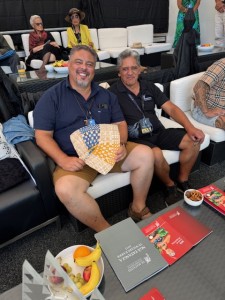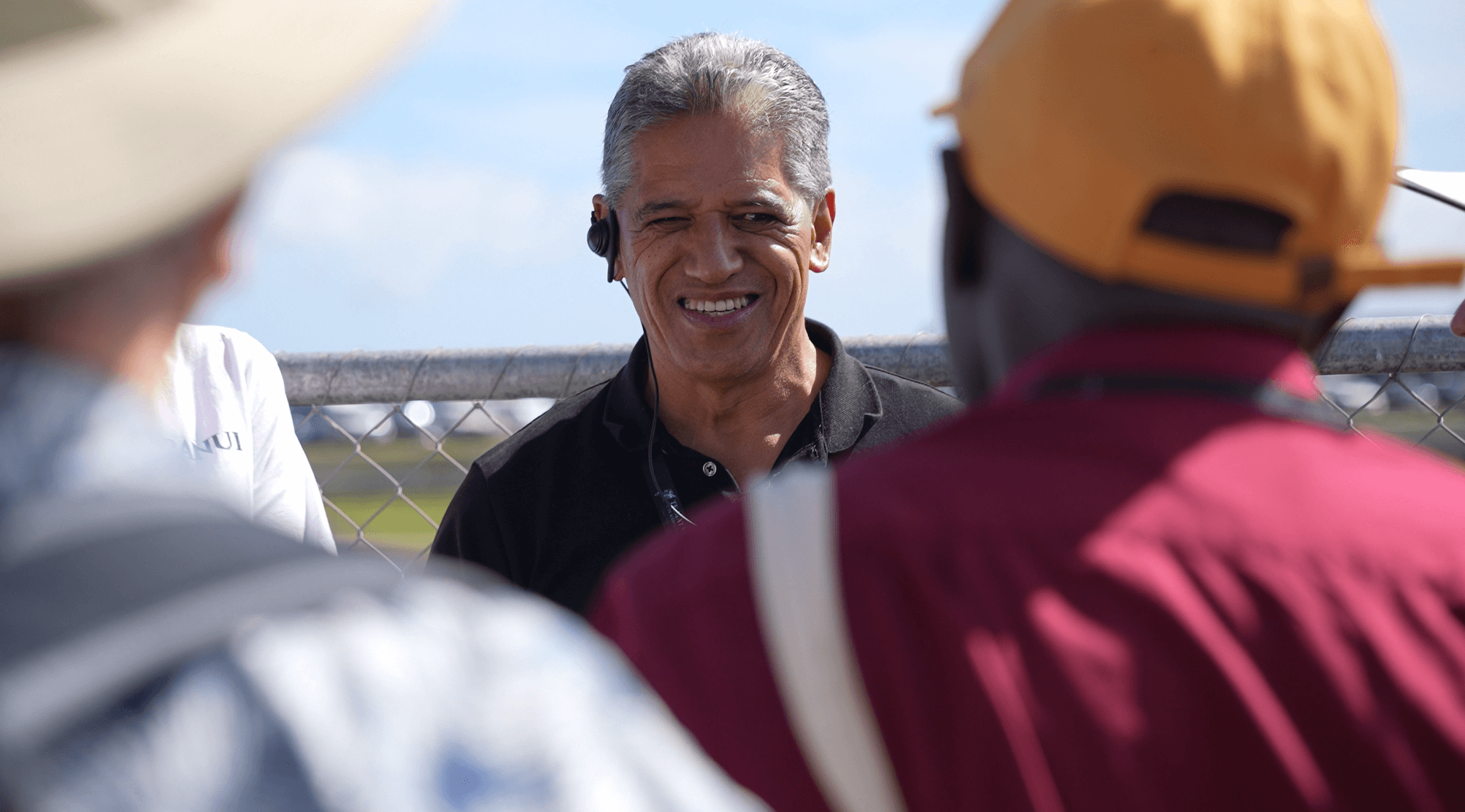For over 16 years, Archdeacon Maui Tangohau (Chair of St Johns College Trust Board, Pou Tokomanawa for Te Pīhopatanga o Aotearoa and Te Hui Amorangi ki Te Tairāwhiti) has played a crucial role in organising Te Matatini, the pinnacle of kapa haka competition in Aotearoa. The festival, which showcases the best of Māori performing arts, takes a staggering 18 months to plan, requiring precision, leadership, and a deep passion for the culture.
For Maui, the love of kapa haka and the spirit of whanaungatanga keep him going. “Te Matatini is about more than competition; it’s about bringing our people together, celebrating our language, our whakapapa, and our stories,” he shares. Reflecting on the success of the festival, he states, “2025—an excellent festival with maximum attendance. Finals sold out. All the festivals have been extremely successful.”

With Archbishop Don at the Te Matatini finals
Planning for Te Matatini is no small feat. As Competition Manager, Maui, along with the festival leadership team (FLT), oversees everything—from structure, media, communications, and legal matters to broadcasting and working with mana whenua. “From the moment roopu submit their entries by June 30 the year before, the real work begins,” he says. “We received 55 teams this time, and from there, it’s a massive administrative effort.”
Teams are placed into a draw, and judges are appointed through a rigorous nomination process. Judges must attend wānanga, prove their capability, and even provide a medical certificate to ensure they can endure the five-day event. “Judging days are long—over eight hours at a time,” says Maui. “It’s vital that the system is seamless and that the judges can focus on their role.”

Greeting Bishop Todd with a hongi
One of the most crucial aspects of the festival is the Automatic Judging System (AJS), which ensures fairness and accuracy in scoring. “Judges use an iPad to mark performances and provide comments,” explains Maui. “With little room for error, this system demands a high level of precision.”
Seven aggregate disciplines determine the top 12 teams: whakaeke (entry), mōteatea, poi, waiata-ā-ringa, haka, whakawātea, and te reo Māori. The final day is a fresh start, meaning a team that performed well in preliminaries isn’t guaranteed to win. “Kapa haka groups lift immensely in the finals, and one extra mark can make all the difference.”
Leadership at Te Matatini carries strong connections to faith. Tā Selwyn Parata, the Chair of Te Matatini, is a devoted Anglican and embodies leadership values rooted in Hāhi Mihinare. “His position offers real recognition to the church, and many people acknowledge the role of karakia and choral traditions within Te Matatini,” says Maui.
Faith-based influences have long shaped kapa haka, especially in Tairāwhiti. The Tamararo competition, now in its 74th year, was deeply connected to Mihinare traditions. While not every kapa haka group in Aotearoa is tied to the church, its impact remains evident in certain regions.
For Maui, kapa haka is more than just an event—it’s a lifelong passion. Having chaired the Tamararo Trust for 48 years, he remains committed to seeing Māori culture thrive. “Te Matatini has lifted kapa haka to new heights since its first festival in 1972,” he says. “Seeing our people express themselves through performance is truly thrilling.”
Running the festival is no easy task. “You work 20-hour days, but I always ensure my health is right to sustain five days of what I call ‘hell.’ Every day, we review and improve—judging, backstage, the system—ensuring today is better than yesterday.”
Kapa haka continues to evolve, reaching a global audience. Maui appreciates both traditional and contemporary styles but stresses the importance of cultural integrity. “Maintaining te reo Māori is key—English words can diminish the meaning,” he says. “Innovation should come through movement, poi, and haka energy, while still honouring the kaupapa.”
Many groups at Te Matatini 2025 have focused on Te Tiriti o Waitangi, a reflection of its ongoing significance. “Kapa haka is about sending powerful messages,” Maui concludes. “And that’s what makes it so special.”
